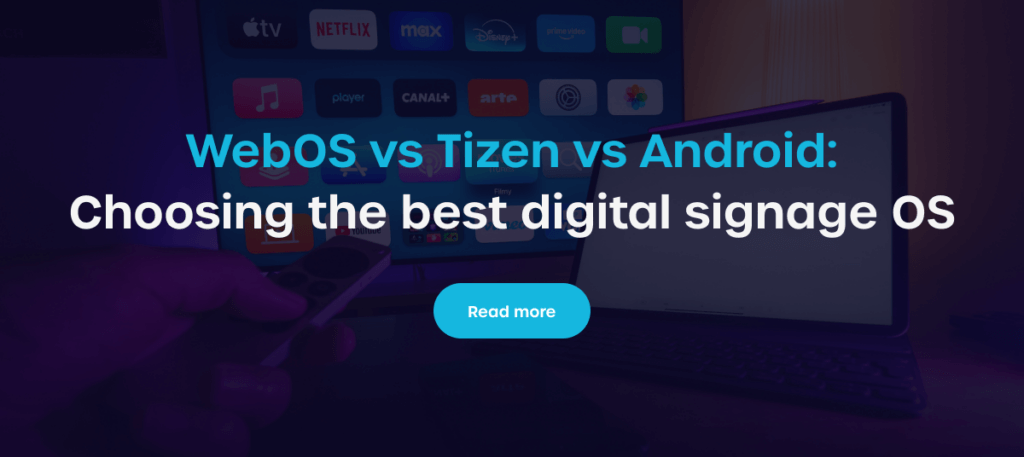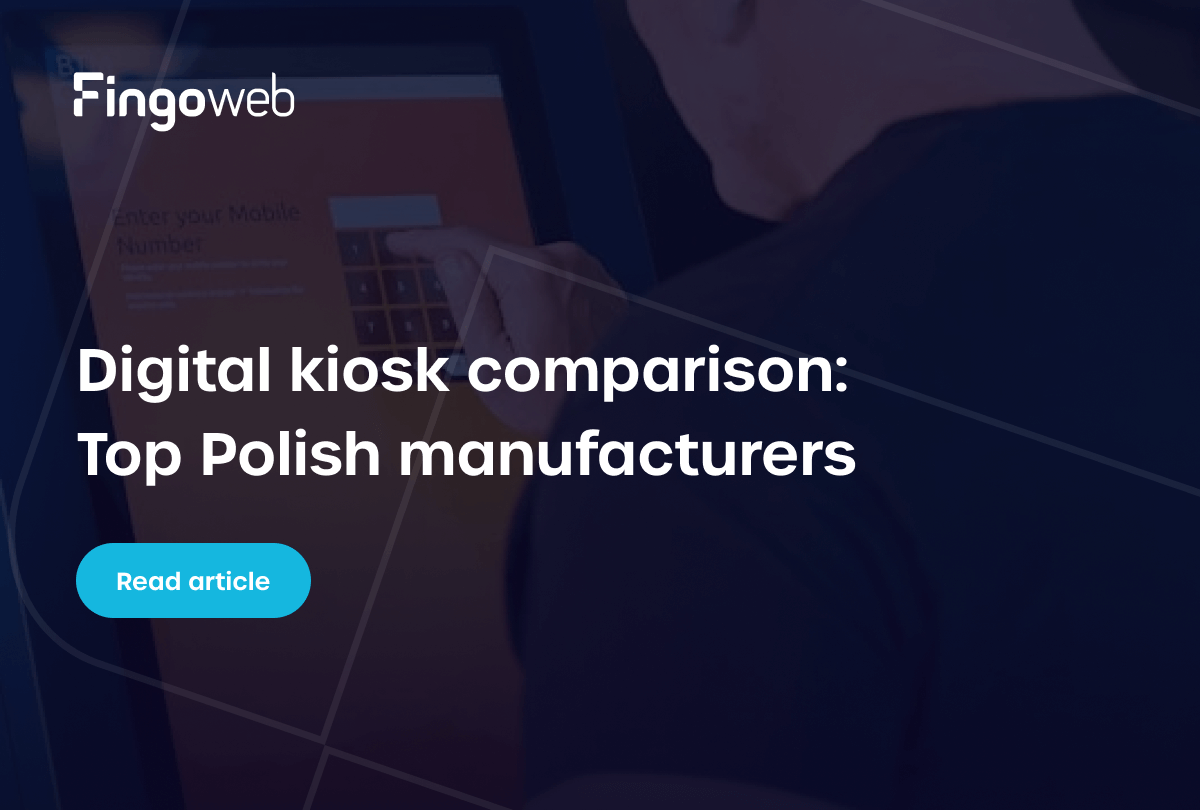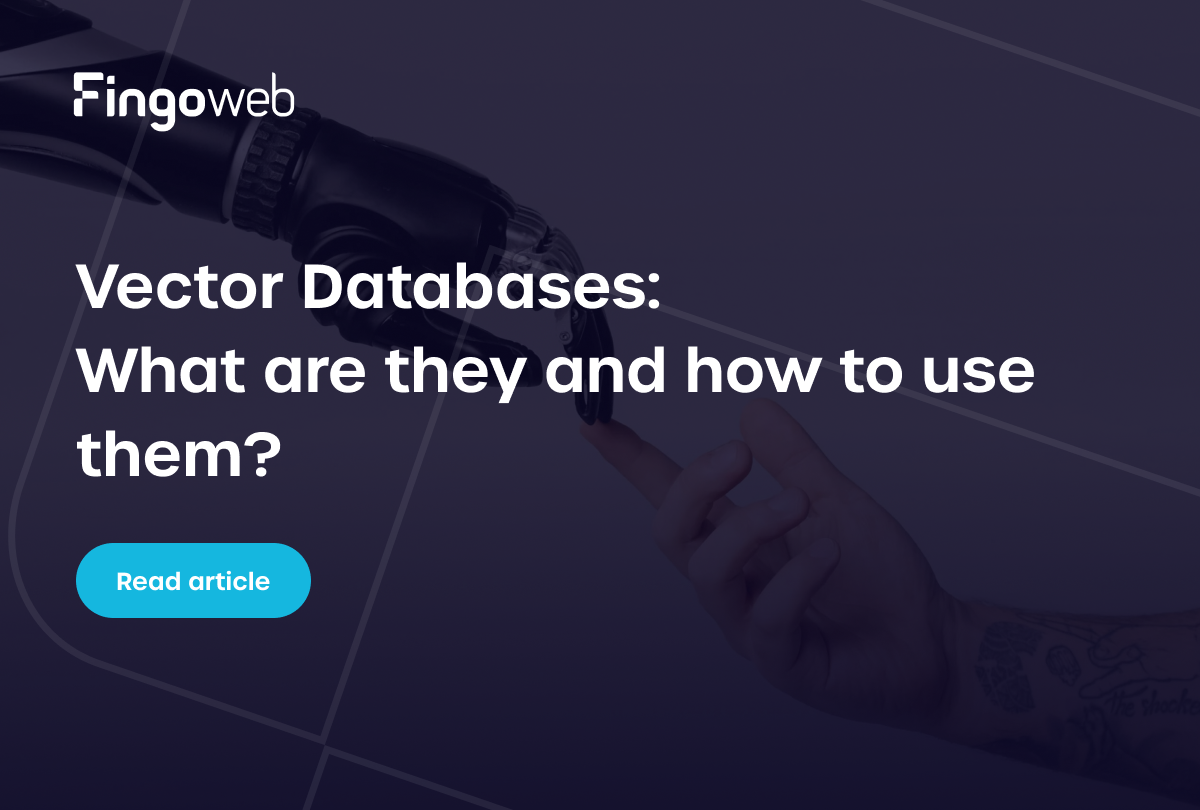Digital screens are no longer just a modern accessory – they have become one of the most effective tools for sharing information, attracting attention, and engaging customers. From retail stores and shopping malls to banks, restaurants, and healthcare facilities, companies across industries are investing in digital signage apps to manage and deliver content in real time. These applications make it possible to schedule campaigns, display tailored messages, and integrate with existing systems, ensuring faster and more dynamic communication.
Poland has emerged as an important player in this field, with local software companies developing solutions that compete on an international level. Thanks to a strong IT talent pool and experience in building scalable applications, Polish providers are creating platforms that combine innovation with practical usability. In this article, we highlight the top 5 companies producing digital signage software in Poland, showing the diversity of approaches and solutions available on the market.
Understanding the Polish digital signage software landscape
Poland’s tech industry has been steadily expanding, and digital signage software is one of the areas where local companies have built strong expertise. Understanding this landscape helps businesses see why Polish developers are well positioned to deliver advanced digital signage apps that combine innovation with cost efficiency.
Why Poland is becoming a hub for digital signage software?
Poland has become one of the most dynamic IT hubs in Central Europe. With a strong pool of developers and competitive rates, many companies here deliver advanced solutions for businesses worldwide. Digital signage apps are part of this trend, as Polish teams create platforms successfully implemented in retail, banking, healthcare, and hospitality. Several factors make Poland an attractive location for building this type of software:
- Highly skilled developers – Poland consistently ranks among the top countries in developer skills, with strong expertise in JavaScript, PHP, and mobile frameworks used in digital signage apps.
- Cost efficiency – Compared to Western Europe or the US, Polish software development offers competitive rates without compromising quality.
- Experience in large-scale projects – Polish software houses work with international clients, delivering scalable applications for both startups and enterprise-level organizations.
- Focus on innovation – Many companies specialize in building tailored solutions, ensuring flexibility and avoiding the limitations of generic platforms.
- Strong IT ecosystem – Poland’s growing startup scene and partnerships with global brands help fuel continuous improvement in technology standards.
- Cultural and geographical proximity – For European clients, Poland offers convenient time zones and close communication, which speeds up collaboration.
In short, Poland combines top technical talent, competitive costs, and proven experience – making it one of the best places to develop digital signage apps.
What makes a great digital signage application?
The success of any digital signage project depends largely on the quality of its software. While hardware determines how content is displayed, it is the application that controls how easily businesses can create, manage, and deliver messages to their audiences.
A great digital signage app should include:
- User-friendly content management – intuitive tools for uploading, editing, and scheduling content without requiring advanced technical skills.
- Scalability and device management – the ability to support anything from a single screen to hundreds of displays across multiple locations.
- Seamless integrations – compatibility with existing business systems such as CRMs, ERPs, or external APIs, ensuring that the app adapts to the company’s needs rather than the other way around.
In essence, the best digital signage apps are flexible, easy to use, and future-proof, giving businesses the freedom to grow their communication strategy without being held back by software limitations.

Ranking: Top 5 Polish companies creating digital signage software
1. Fingoweb
At Fingoweb, businesses gain the most value from custom digital signage apps rather than off-the-shelf products. Every company has its own processes, goals, and audiences. A ready-made app might appear convenient at first, but it often comes with limitations in features, poor integration options, or rising licensing costs over time.
Fingoweb designs applications tailored to specific needs – from web-based CMS platforms, such as the ones made for IMS Sensory Media to mobile apps for managing displays, as well as smart TV applications for LG webOS, Samsung Tizen, or Toshiba OS, Android and many more. Instead of forcing adaptation to a predefined tool, the solution is built around the business itself.
Advantages of choosing Fingoweb:
- Flexibility: Applications designed to match unique workflows.
- Integration: Seamless connection with existing systems (CRM, ERP, APIs).
- Future-proofing: Easy expansion and modification as requirements evolve.
- Cost control: No vendor lock-in or recurring license fees.
This approach ensures that a digital signage strategy genuinely supports the business – rather than limiting it.
2. Nanovo (SIGNIO platform)
Nanovo is a Warsaw-based company best known for its SIGNIO platform, a proprietary system for managing digital signage networks. The software emphasizes an intuitive graphical interface and reliable content distribution. Nanovo has gained recognition thanks to large-scale deployments, particularly in the financial sector, where secure and stable communication is critical.
Key strengths of the SIGNIO platform include:
- User-friendly interface that simplifies daily management.
- High reliability in content delivery across distributed networks.
- Proven track record with enterprise-grade implementations in the financial industry.
While the platform offers strong reliability, its customization possibilities are more limited compared to tailor-made applications.
3. TDC Polska (SCEO® Software)
TDC Polska has developed SCEO®, a browser-based CMS for managing digital signage networks. The system enables users to create, schedule, and distribute content across multiple displays from any internet-connected device. It is frequently combined with LED display systems and large-scale installations in public spaces.
While the platform is functional and widely implemented, it may not always deliver the level of flexibility required for unique integrations or specialized workflows.
4. ADScreen (Content Networks)
ADScreen is a Polish company offering a cloud-based digital signage system used across a variety of industries. Their software makes it possible to remotely manage campaigns, schedule content, and monitor display performance.
The platform is convenient for businesses seeking quick deployment without investing in custom development. However, as a SaaS-based product, it operates within a fixed set of features, which may pose challenges for companies needing advanced customization or integrations with internal tools.
5. M4B – “The Wall” software
M4B provides “The Wall,” a proprietary software solution for centralizing content management across video walls and screens. The system is built to support scheduling, distribution, and monitoring of digital content in large-scale environments. It is most commonly used in retail, hospitality, and food service sectors.
- Key functions: scheduling, distribution, and monitoring of content.
- Use cases: large screen networks requiring centralized control.
- Strengths: streamlines operations and ensures consistent communication across displays.
- Limitations: primarily tailored to specific industries, offering less flexibility for unique integrations or diverse business needs.
In summary, “The Wall” is an efficient tool for certain sectors but may not fully meet the requirements of organizations seeking more customized solutions.

FAQ - Digital signage apps
What are digital signage apps used for?
Digital signage apps are used to manage and display content across digital screens – from simple image slideshows to dynamic video walls and interactive kiosks. They help businesses communicate with customers in real time, while also providing flexibility to update and adapt content quickly as needs change.
How do digital signage apps differ from traditional CMS platforms?
While traditional CMS platforms are built for managing websites, digital signage apps are designed to handle screen networks, scheduling, and offline playback. They are optimized for physical displays rather than online pages.
Can digital signage apps integrate with existing business systems?
Digital signage apps differ from traditional CMS platforms because they are purpose-built for managing physical display networks rather than websites:
- Content scheduling: manage when and where messages appear across multiple screens.
- Offline playback: ensure displays keep running even without internet connectivity.
- Screen optimization: designed for digital displays, video walls, and kiosks instead of web pages.
What are the benefits of using digital signage apps in Poland?
Using digital signage apps in Poland brings both technological and economic advantages for businesses:
- Cost efficiency: access to skilled developers at competitive rates compared to Western Europe or the US.
- High expertise: strong IT talent pool with experience in custom software and smart display solutions.
- Local support: easier collaboration and adaptation to the Polish and broader European market.
How to choose the best digital signage app for your company?
Start by identifying whether your needs are basic (content display, scheduling) or advanced (integration, scalability, custom workflows). If you require long-term flexibility, working with a software house to develop a tailored application may be the most cost-effective choice.








